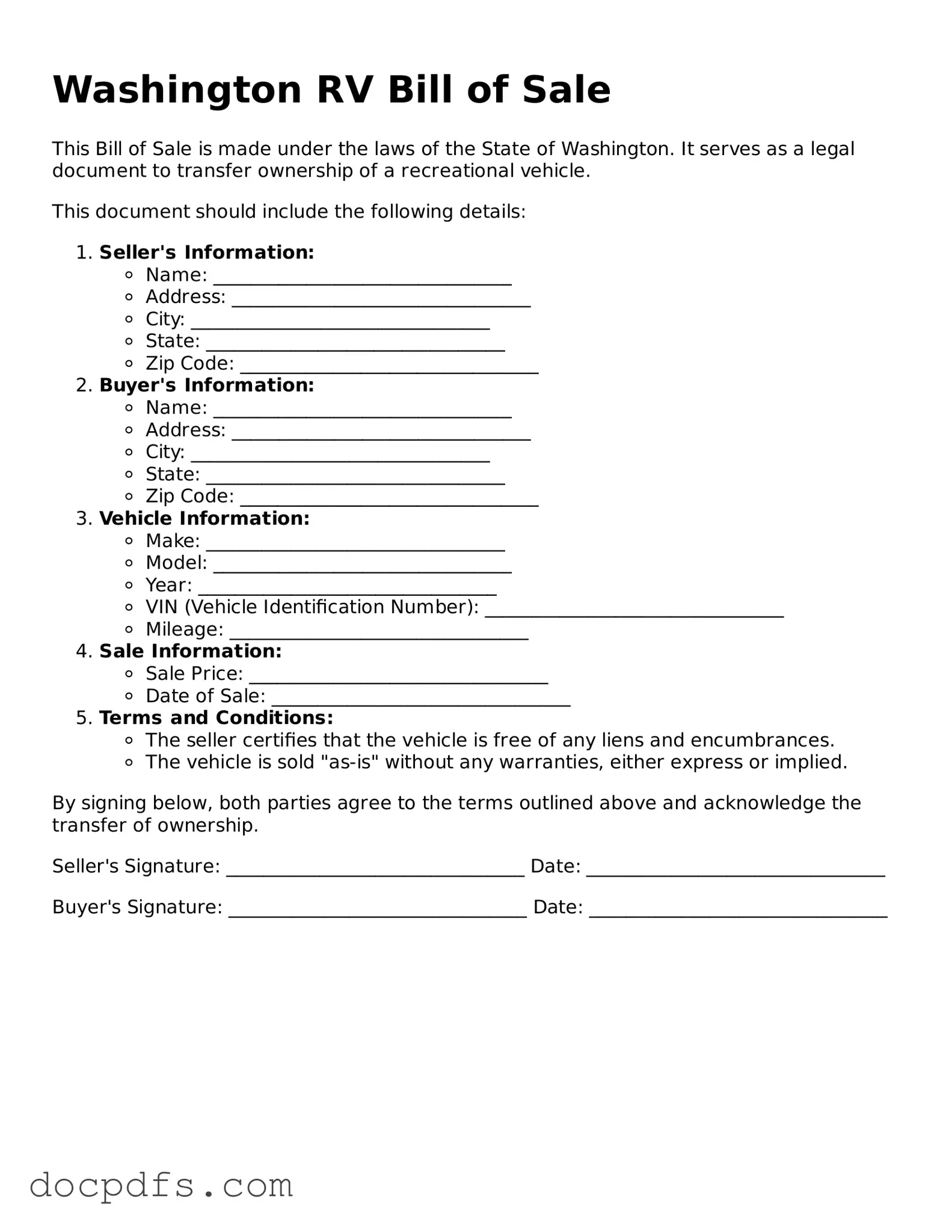When purchasing or selling a recreational vehicle (RV) in Washington State, the RV Bill of Sale form plays a crucial role in ensuring a smooth transaction. This document serves as a legal record that outlines the details of the sale, including the names and addresses of both the buyer and seller, the vehicle's identification number (VIN), make, model, and year. Additionally, it captures the sale price and the date of the transaction, providing clarity and protection for both parties involved. Importantly, the form may also include information regarding any warranties or representations made by the seller, which can be vital should any disputes arise after the sale. By accurately completing this form, buyers can establish proof of ownership, while sellers can safeguard themselves against potential claims. Overall, the RV Bill of Sale is not just a formality; it is an essential tool that facilitates trust and transparency in the buying and selling process of recreational vehicles in Washington.
